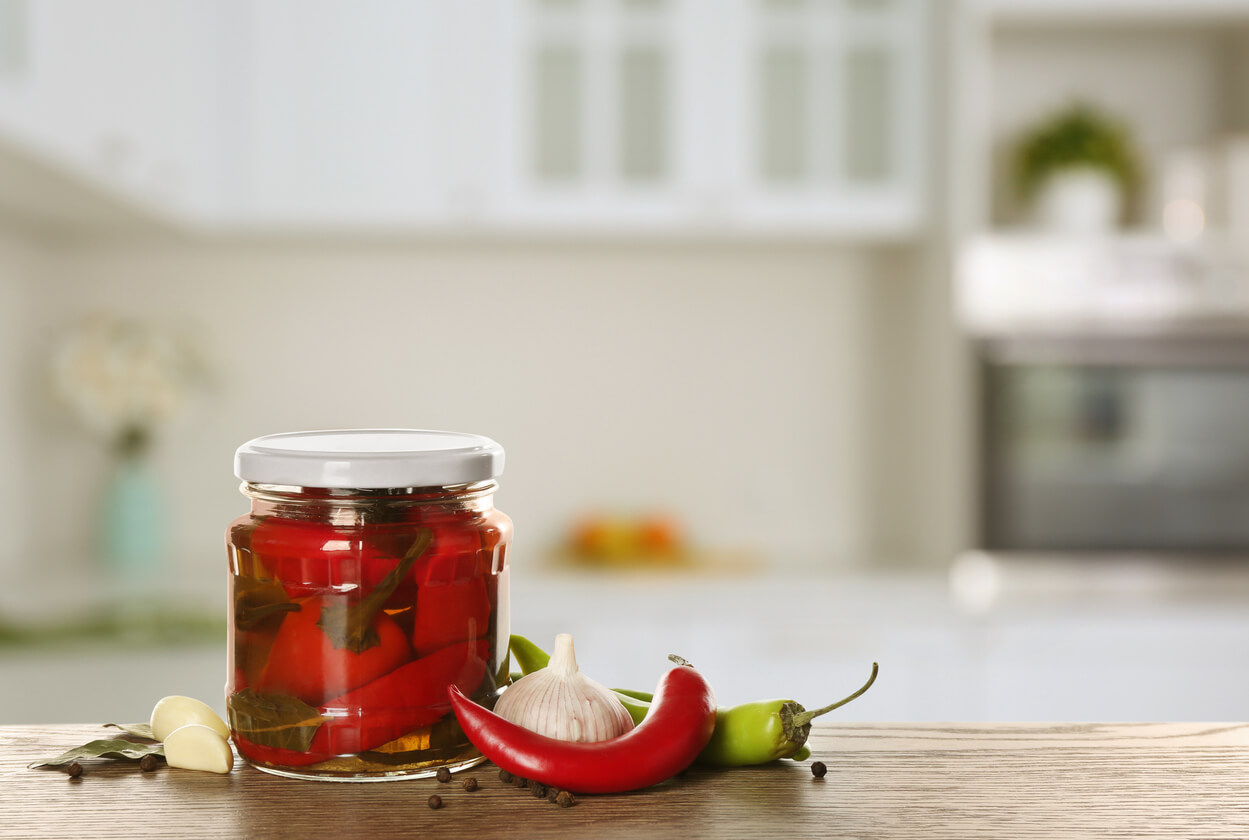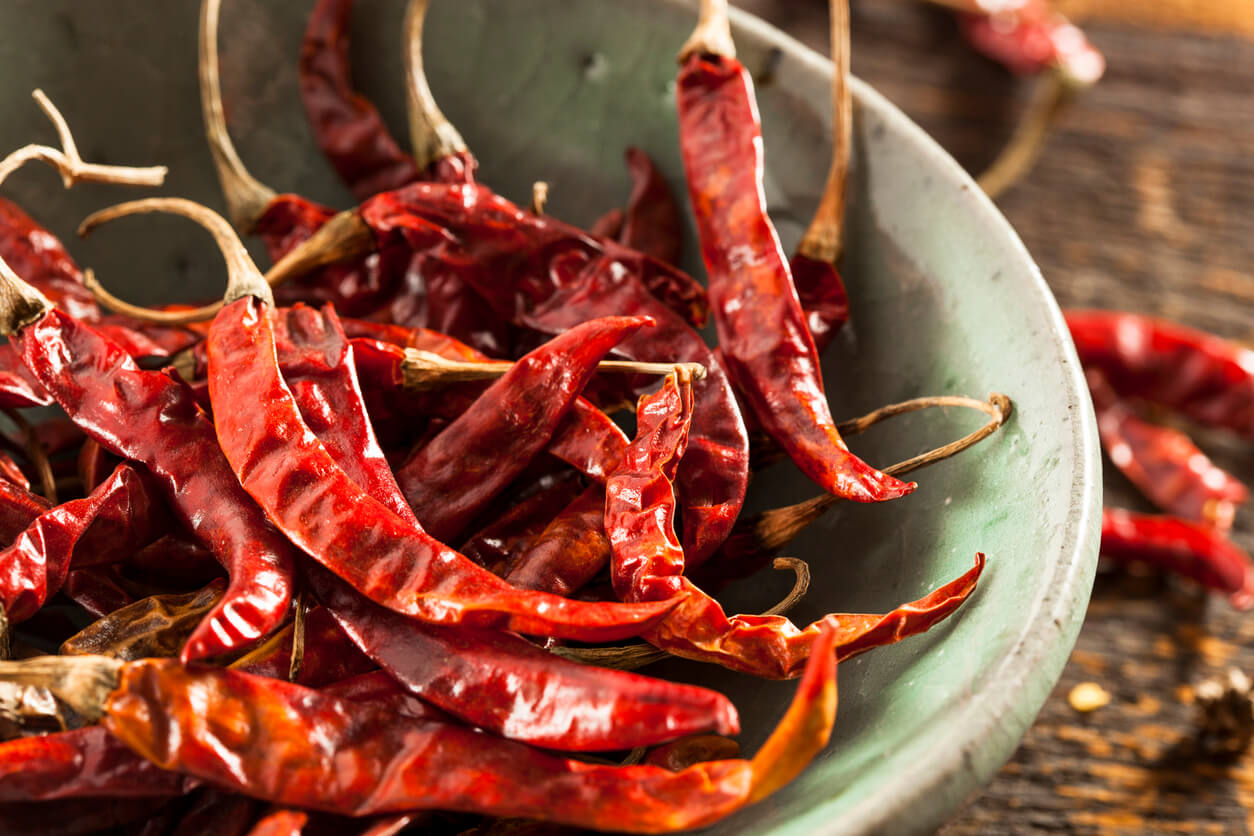
Pickled chile peppers in a jar
So, you’ve picked plenty of peppers and you have more than you can eat in a week. Time to put together a preservation plan!
Handling tip: Hot peppers, even milder hot peppers, can cause skin irritation. Wear gloves, goggles, and a mask when preparing hot peppers. And keep the air moving in your workspace.
Freezing
Freezing is one of the quickest and easiest ways to prepare your peppers for storage. Put them in small bags so you can only defrost what you need.
- Choose crisp, tender peppers. Wash them, then remove stems, ribs and seeds, and slice, dice, or chop as you prefer.
- Blanch in boiling water for 3 minutes for halves, or 2 minutes for strips, rings, or dices.
- Cool, drain, and pack in airtight bags, leaving 1/2 inch of headspace. Store flat in the freezer.
Option: For crisper texture when you defrost your peppers, pack them up raw and seal in bags with no headspace. Store flat in the freezer.
If you have a vacuum food sealer, use it to prevent freezer burn and extend the storage life of your hot pepper crop.
Quick Pickling
Quick pickling, or refrigerator pickling, is an easy way to save some of your pepper harvest for later. This method does not require special canning equipment or skill. All you need is a pot to make the brine and jars to store your peppers.
Canning
Canning is a time-honored preservation method—and one you should only pursue if you have the right equipment. You must be careful to follow all canning directions to the letter in order to avoid botulism in your canned goods. We have a post in Food Gardening Daily that provides 10 rules to live by for pressure canning safety.
If you’re planning to can hot peppers, you need to take some additional precautions. The capsaicin in hot peppers can really irritate your eyes, nose, and throat; if you’re processing super-hot peppers, like ghost peppers, you could get burns on your skin. So, be sure you glove up, put on eye protection (get those goggles out of the toolbox!), and consider wearing a sturdy face mask like a KN95. And always, always, be sure to have good ventilation where you’re working.
Dehydration

Dried red hot chile peppers
You can also dehydrate your harvested hot peppers. Slice your hot peppers evenly and spread them out in a food dehydrator for about eight hours, or on parchment-lined baking sheets for four to 10 hours at your oven’s lowest setting.
If your hot peppers are small, you can dry them whole. Some people even string their dried peppers and hang them as decorations.
In general, it’s best to store your dried hot peppers in an airtight jar out of the light.
If you use the oven-drying method, check the jar daily for a week to ensure that all your pepper pieces were fully dried; any moisture left behind can support mold. Just give the jar a shake and check for any moisture on the wall of the jar or on the pepper pieces. If you spot any mold, toss out the batch and try again.
How frequently do you harvest your hot peppers? Please tell us what you look for when getting ready to harvest, and how you preserve your harvest.


 Previous
Previous


We freeze dry our jalapenos and then turn them into powder in the Vitamixer. We call it death dust.